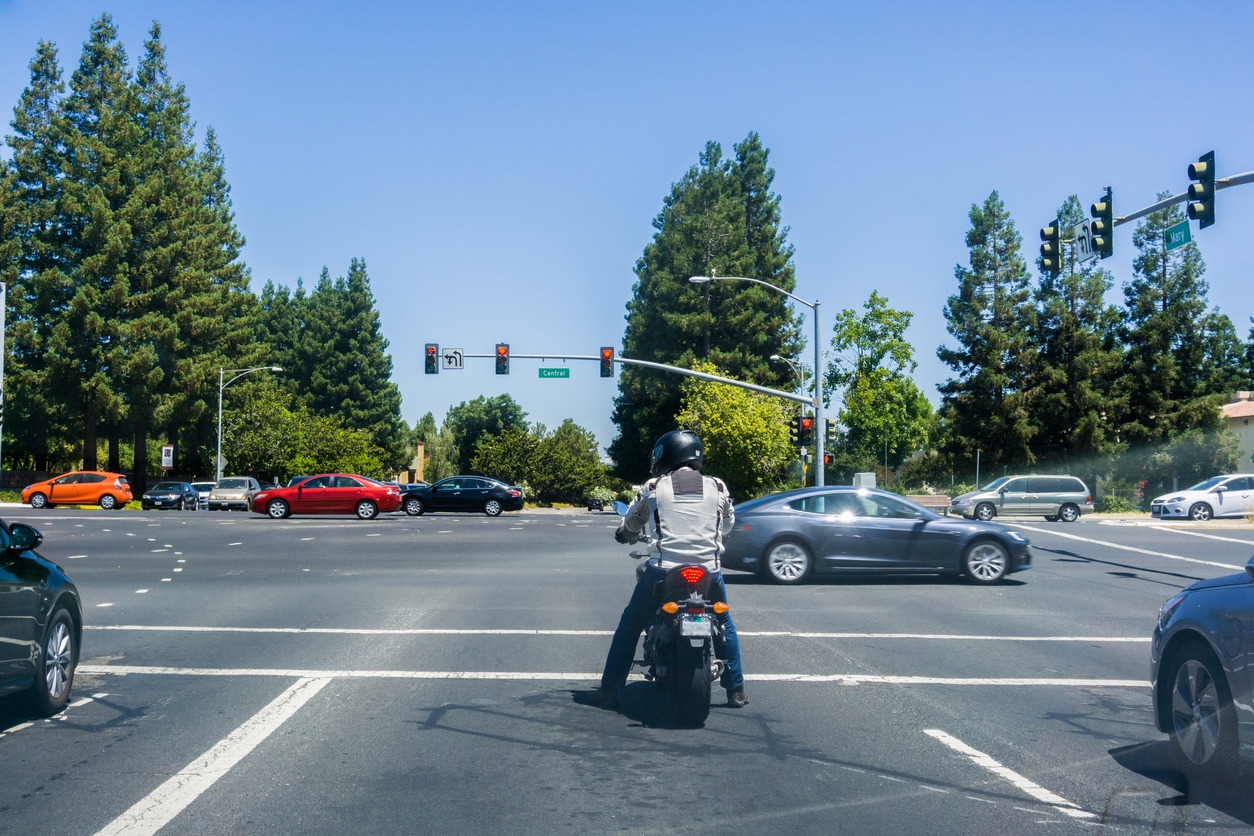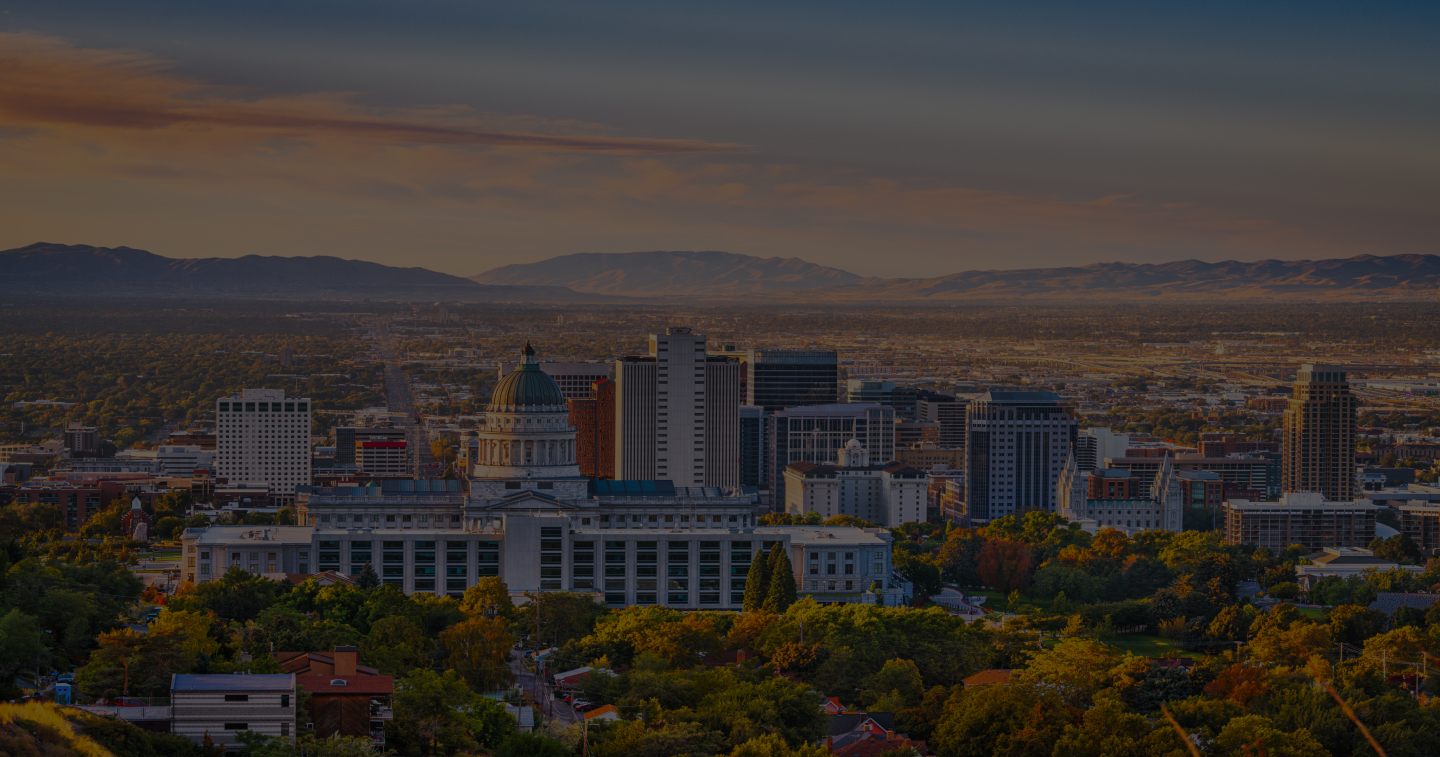
Have you ever found yourself stuck in traffic on I-15 and wondered if you could just zip through the cars? Lane splitting is a hot topic among us riders, especially here in Utah. It’s not just about convenience. It’s about knowing the rules of the road to keep your rides smooth and legal. Whether you’re a daily commuter in Salt Lake City or someone who enjoys weekend rides in the Uintas, understanding where you stand with the law is crucial.
In this article, you will learn:
- The definitive legal status of lane splitting in Utah.
- How Utah’s stance compares with neighboring states.
- Essential safety and legal tips for riding in Utah.
As motorcycles become more popular and traffic laws evolve, staying informed is your best defense against accidents and tickets. Let’s dive into the details and make sure you’re equipped with the latest information.
What is Lane Splitting?
So, what exactly is lane splitting? It’s when a motorcycle drives between two lanes of stopped vehicles or slowly moving cars, usually in heavy traffic. While it might seem like a handy way to dodge traffic jams, it’s surrounded by a heap of safety and legal concerns. Why do riders do it, and why do some motorists get ruffled by it?
Lane splitting can be a bit of a gray area, not just in practice but in people’s opinions as well. Some riders swear by it as a way to avoid getting rear-ended in stop-and-go traffic, while others view it as risky and unnecessary. Then there are the drivers in cars who might not expect a motorcycle to zip past them in slow traffic, which can lead to surprise and sometimes, unfortunately, accidents.
Understanding the basics is just the start. We need to dig into how these actions stand up under Utah’s laws, and whether they’re legally permissible or a ticket waiting to happen.
Current Legal Status in Utah
Now, onto the meat of the matter: Is lane splitting legal in Utah? As of now, the straightforward answer is no. Utah law does not permit motorcycles to ride between lanes of traffic or share a lane with another vehicle in the same manner that some other states do, like California.
However, Utah has taken steps toward accommodating motorcyclists in other ways. For instance, Utah was the first state to legalize “lane filtering” under certain conditions. Since 2019, motorcyclists in Utah can filter between lanes when cars are stopped and only on roads where the speed limit is 45 mph or less. This law is meant to keep riders safe from rear-end collisions in slow traffic scenarios, which is a big win for the riding community.
This distinction between lane splitting and lane filtering is crucial. Lane filtering is only legal in very specific situations, and understanding these nuances can keep you out of trouble and on the right side of the law, as directed by the Utah Legislature.
Comparison with Neighboring States
Understanding the legal landscape of lane splitting in Utah can be even more enlightening when we see how our neighbors handle the issue. This comparison not only highlights the unique position of Utah but also helps you navigate the laws if you’re riding across state lines.
To the west, California stands out as the only state that has explicitly legalized lane splitting, allowing motorcyclists to ride between lanes of traffic on highways. This practice is seen as a way to reduce traffic congestion and prevent accidents in heavily congested areas. Nevada, like Utah, does not allow lane splitting, but it also hasn’t adopted any laws regarding lane filtering like Utah has.
Colorado and Arizona, also neighbors, follow a similar pattern to Nevada and do not allow lane splitting. In these states, the lack of clear legal acceptance means riders are best served by sticking to their lanes and avoiding any maneuvers that could be interpreted as lane splitting.
The variation in laws serves as a reminder of how diverse legal approaches to motorcycle riding can be across state lines. For Utah riders, this means extra caution is necessary when embarking on interstate trips, as what’s acceptable at home might not fly in neighboring states.
Safety Considerations and Guidelines
Even though lane splitting isn’t legal in Utah, understanding how to safely engage in motorcycle lane filtering is crucial for every motorcyclist. Here are some essential safety tips and guidelines that can help you navigate this practice legally and securely:
- Know the Lane Filtering Law: First and foremost, be aware that Utah lane filtering is only permissible under specific conditions: on roads where the speed limit is 45 mph or less, and only when traffic is stopped. Ensure you’re filtering only in these situations to stay compliant with Utah law.
- Be Visible: Wear high visibility clothing and ensure your motorcycle lights are functioning properly. Being seen is crucial to safety, especially when filtering between lanes.
- Proceed with Caution: When you begin filtering, do it cautiously. Keep your speed low and watch for signs that drivers might be changing lanes or opening doors. The unexpected can happen quickly, and staying alert is your best defense.
- Educate Yourself: Consider taking advanced riding courses that focus on urban riding and defensive strategies. These can provide you with skills to better handle dense traffic and potentially hazardous situations.
- Advocate and Communicate: Use clear signals, make eye contact with drivers when possible, and use your horn if you need to alert someone of your presence. Communication on the road goes beyond turn signals and brake lights.
Public Opinion and Future Prospects
Lane splitting and filtering are topics that often spark a lot of debate among motorists and motorcyclists alike. In Utah, where lane filtering is legal under certain conditions, understanding how the public feels about these practices can give us insight into what future legislative changes might be considered.
Public Opinion: Recent surveys and studies indicate a mixed reception to lane filtering in Utah. While many motorcyclists appreciate the legal recognition of filtering as a safety measure, some automobile drivers express concerns about potential hazards, especially those unaware of the law. This division suggests a need for greater public education and awareness campaigns to help both riders and drivers understand the benefits and rules of lane filtering.
Legislative Trends: Looking ahead, there could be movements toward expanding or restricting lane filtering based on public feedback and ongoing safety studies. As traffic patterns evolve and more data becomes available on the impact of lane filtering on traffic flow and safety, legislators might adjust the specifics of when and where filtering is allowed.
What to Do If You’ve Been in a Motorcycle Accident
No one ever wants to think about getting into an accident, but being prepared can make a significant difference in the outcome. If you’re involved in a motorcycle accident in Utah, here are crucial steps to follow:
- Ensure Safety: First and foremost, assess your physical condition and that of any other parties involved. Move to a safe area away from traffic if you can move without causing further injury.
- Call for Help: Dial 911 immediately. Even if the accident seems minor, it’s important to have a police report for insurance purposes, and you may need medical attention for injuries that aren’t immediately apparent.
- Document the Scene: Take photographs of your motorcycle, other vehicles involved, and the surrounding area. Note down the details of the accident, including the time, traffic conditions, and weather. Gather contact information from witnesses and other drivers, along with their insurance details.
- Do Not Admit Fault: It’s crucial to remain neutral. Avoid discussing the accident details with other drivers and do not admit fault at the scene. These statements can be used against you later.
- Contact Your Insurance: Inform your insurance company about the accident as soon as possible. Be factual about the details but remember, the conversation could be recorded, so stick to the facts.
- Consult a Motorcycle Accident Lawyer: Especially important if there are injuries or significant damage. A lawyer specializing in motorcycle law can help navigate the complexities of accident claims in Utah and ensure your rights are protected.
- Follow Up on Medical Care: Even if you feel fine, follow up with a healthcare provider. Some injuries, like whiplash or concussions, can take hours or days to manifest.
Contact the Utah Motorcycle Accident Lawyers at Parker & McConkie Today
For more information, please contact an experienced motorcycle accident lawyer at Parker & McConkie to schedule a free initial consultation today. We have 5 convenient locations in Utah, including Midvale, Salt Lake City, Ogden & Provo, UT. Clients can also visit our offices in Idaho Falls, ID & Rock Springs, WY.
We proudly serve Weber County, Utah County, Salt Lake County in Utah, Bonneville County in Idaho, Sweetwater County in Wyoming , and its surrounding areas:
Parker & McConkie Personal Injury Lawyers – Salt Lake City Office
466 S. 500 E., Suite 100,
Salt Lake City, UT 84102
(801) 851-1202
Hours: 24/7
Parker & McConkie Personal Injury Lawyers – Midvale Office
7090 Union Park Ave, #160,
Midvale, UT 84047
(801) 845-0440
Hours: 24/7
Parker & McConkie Personal Injury Lawyers – Ogden Office
2510 S Washington Blvd, Suite 160,
Ogden, UT 84401
(385) 402-8187
Hours: 24/7
Parker & McConkie Personal Injury Lawyers – Provo Office
37 E Center St, Suite 300,
Provo, UT 84606
(801) 876-4107
Hours: 24/7
Parker & McConkie Personal Injury Lawyers – Rock Springs Office
531 N Front St,
Rock Springs, WY 82901
(307) 205-7400
Hours: 24/7
Parker & McConkie Personal Injury Lawyers – Idaho Falls Office
2235 East 25th St. Suite #280,
Idaho Falls, ID 83404
(208) 418-0633
Hours: 24/7



